a majestic animal, and the largest mammal on earth.
We will deal with this subject in two articles:
-
Elephants.
-
Why are they threatened and what means are available to save them?I always had a thing for Dumbo, you know, the cartoon!

Elephants are animals that live and roam in family herds of 10 to 20 individuals. And it is the eldest of the females called “the matriarch” who guides them in deciding which way to go and shows the other members of the family all the places they can find the water which is essential for their survival. Females usually stay together all their lives, while males are asked to leave the family when they are about 10 years old and live a more solitary life or live in small groups.
There are two kinds of elephants, the Asian elephant, and the African elephant.
The Asian elephant is smaller than its African cousin, it measures about three metres at the withers (the neck) with a weight of five tons for males and just three little tons for females. Well, it’s still impressive. Elephants live about 48 years.
They have small ears if you compare them with their African cousins, who, as you can see in the picture, have very large ears. These serve first to give them good hearing (to hear well), but also to dissuade a possible adversary from competing with them, and to act as air conditioning. Yes, I know it’s strange, but it’s true. When the blood passes through their ears, and, in addition, they shake them, creating an air current like a fan, the temperature of their body drops by 5°. Incredible isn’t it!
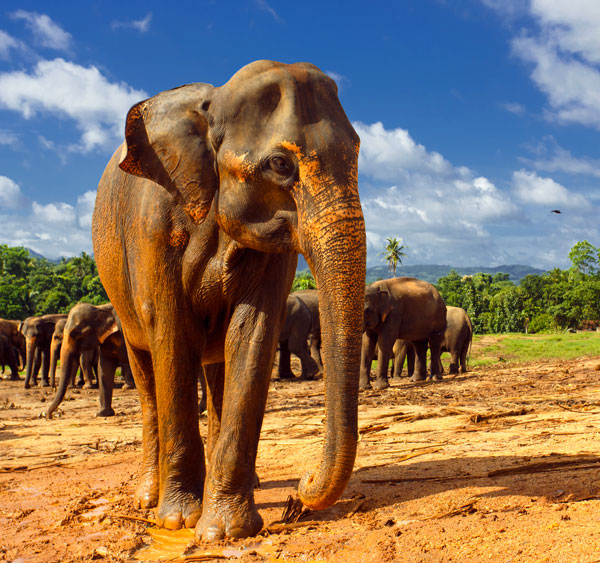
African elephants are enormous, weigh about seven tons, measure three metres at the withers, and have a life expectancy of between 60 and 70 years. But beware, they are capable of charging at a speed of 40 km an hour at anyone who represents a danger to them or their young. “Elephants can be very dangerous.”
I would not like to find myself in front of one without first being introduced. Says Little Chef Panda.
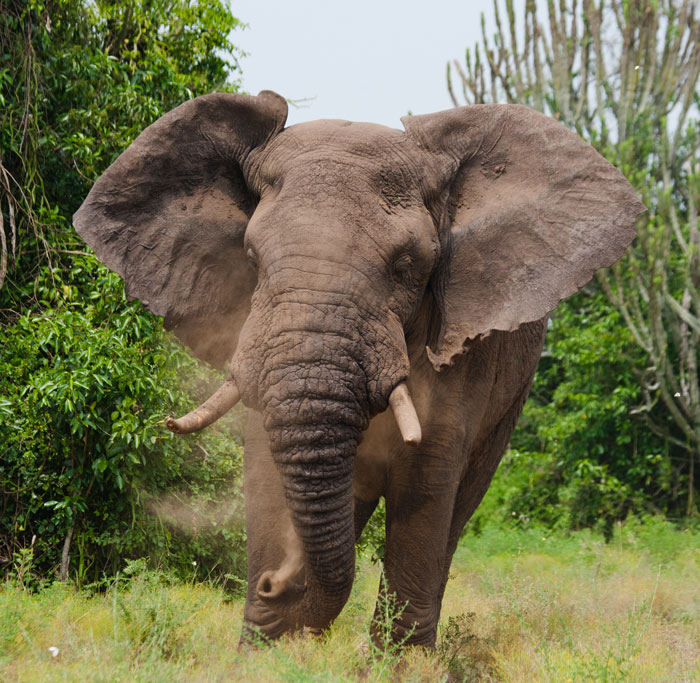
We cannot tell a lie, the main characteristic of an elephant is its trunk which has between 100,000 and 150,000 muscle fibres, is devoid of bones and cartilage and is therefore very soft. It weighs about 100 kilos.
But what we thought we knew is wrong, an elephant’s trunk is like a nose but is like a hand too.
They suck in water, up to 8 litres at a time, and then pour it into their mouths to quench their thirst or to take a shower so they can cool off. An elephant can smell things, scratch himself, pick up food or move things with his trunk.
But for baby elephants, it’s more complicated. They must learn to use their trunks by watching the older ones and then try in their turn, which leads us to see some funny sequences. I know it’s not nice to make fun, but it’s irresistible! Watch this video to see how the big ones do it!
Baby elephants receive a lot of caresses with their parents’ trunks moving back and forth… they love it!!
Raising their trunks is the way they warn others of imminent danger.
And to call or challenge each other, they blow into their trunks and utter loud cries called “trumpets”.
But that’s not all, the trunk is also a formidable weapon, capable of killing if the animal needs to defend itself.
It is hugely important that the elephant takes care of this wonderful tool and if by misfortune, he damages it, or worse, loses it, it will die.
The nostrils at the end of his trunk are very effective, a veritable radar. Nothing escapes it, and even if danger is lurking he can take steps to avoid it, and all this, thanks to his sense of smell.
Finally, when an elephant is swimming, you can see his trunk rising out of the water like a snorkel to breathe in air. Endearing!!
There is a second thing that helps us to recognise an elephant, its tusks, which give the impression of being two huge fangs. GRrr!
They are larger in the male than in the female and are used for attacking and for digging up roots.
But, a small detail, in Asian elephants, the female often lacks tusks, and it is the same in certain parts of Africa too, because nature may be doing something clever. Researchers have found that about 90% of female elephants do not have tusks and that this evolution of the species is linked to poaching.
Poaching is illegal fishing or hunting. These people are called poachers.
The elephant’s diet:
It’s absolutely amazing to realise that the elephant is the largest animal in the world and only eats plants such as herbs, leaves, fruits, bark, wood, etc.
He spends all his time looking for food (18 to 20 hours a day).
Yes, he needs a lot: for an adult, 150 to 230 kg a day, and he is also very careful about the quality of the food that chooses to eat. He has an inefficient digestive system, and he knows the importance of his choice of food for his health. It’s very important for him.
Thanks to their diet, elephants help to maintain the balance of the ecosystem by eating plants that are not always beneficial (weeds), which tend to be invasive, and by doing so, they make room for tender new grass to grow, providing healthy food for the animals nearby.
They also eliminate the nests of tsetse flies, which cause serious diseases. They are the “Bushmen” of the forests and open spaces, helping to avoid forest fires.
Reproduction:
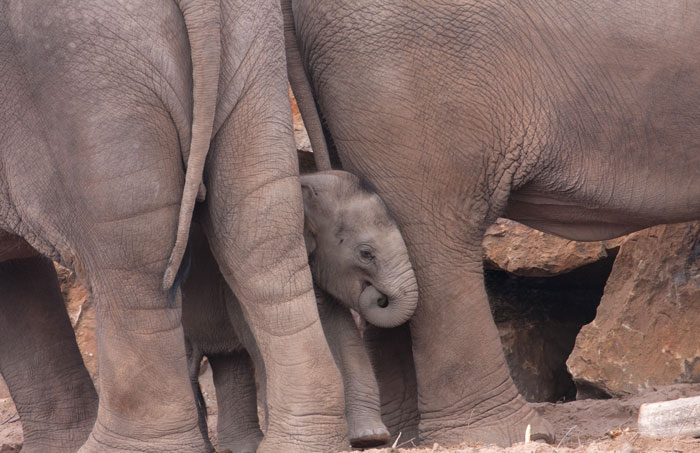
Elephants become adult enough to conceive a baby at around 10 or 12 years of age, and there are not really many mating seasons. Mating continues all the year round, even though it seems that in Africa the rainy season is the most conducive for the elephants.
The baby stays in the womb for 22 months, it is the animal with the longest gestation period on earth.
A single baby elephant is born and weighs about 100 kg. He feeds on his mother’s milk for three to four months and can drink up to 11 litres.
Afterwards, he gradually starts to eat vegetables, and between two and six years old, he drops the milk from his diet.
Baby elephants are pampered and spoiled children, and all the females in the group take care of them.
Who are the villains for elephants?
No matter how hard you look, there is really no predator who wants to challenge the elephant. Its size commands the respect of all but lions and crocodiles who do attack elephants, especially in times of drought.
But to avoid such an event, the females form a large circle, and the young take refuge inside.
There are also, unfortunately, men who for commercial reasons, are ready to kill adults for their ivory tusks.
But that I will talk about in the next article.
WHY DO WE SAY, “HAVE THE MEMORY OF AN ELEPHANT”?
When a person has a very good memory, and an excellent ability to memorise all kinds of information? Do elephants really have a surprising memory?
Indeed, elephants can memorise tracks several hundred kilometres long and, in exceptional times of hunger or thirst, they can remember the paths taken years earlier in search of food or water.
All this knowledge is transmitted from generation to generation to maintain the “collective memory” of elephants.
But if he can remember good things, he can also remember unpleasant things.
An elephant will never forget the face of someone who has hurt him badly, and he may take the opportunity for revenge one day. The opposite is also true, and if someone has taken care of him, he will remember and behave affectionately towards them, even after a long separation.
He will be grateful to him for life.
So, I’ll see you soon for my next article on “Why are they threatened and what means are available to save them?”
Signed, the Little Chef Panda LEE!






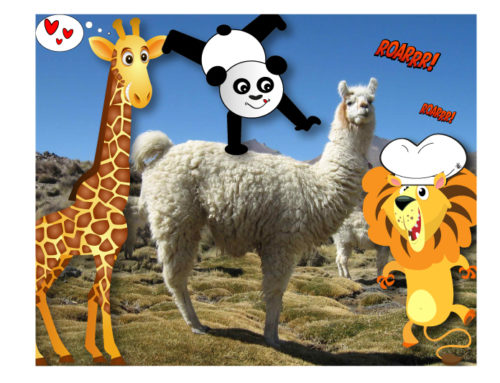

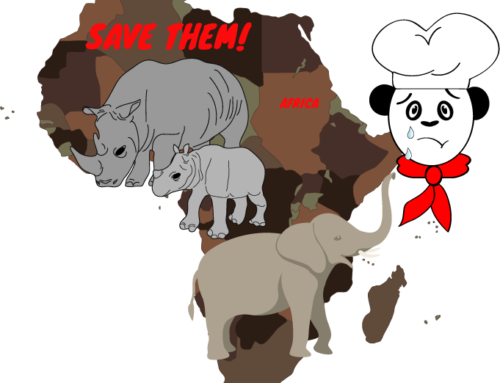

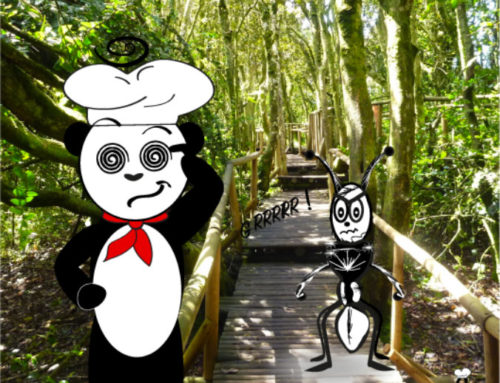
Leave A Comment